A Possible Idle RZ Theory By Time
This guide is currently undergoing change. Keep in mind, strategies may change.
Feel free to use the glossary or extensions as needed.
Originally From [LONG POST] A Possible Idle RZ Theory By Time - Evaluating the Effect of Time for Implementing Black Hole on RZ CT Progression
Revised From Evaluating the Effect of Time for Implementing Black Hole on Rho Progression of RZ CT and Evaluating the Effect of Time for Implementing Black Hole on Delta Progression of RZ CT
TLDR: If u are going to full idle RZ CT, get an approximation of how long the pub will be, convert it into in-game
Abstract #
Implementing black hole at the correct time is very essential for progression of RZ
Methodology #
A data set of
Take an example of
In real game, the formula had already been its most simplified form as the power of
Do note that
Next, a publication data set had been simulated with the following settings: Given a publication that had the same levels of
In short, one should interpret the graphs as the following:
-
-axis is the maximum (in arbitrary unit) obtained at the end of the publication -
-axis is the time, in , when black hole is being implemented
It is worth noting that
The above calculations are all performed in Microsoft Excel with formula implemented in all data sets.
Result #
Evaluating the effect of the time of implementing black hole on
4 different data sets were tested with the simulation of
- A publication at
with time interval 1.
Maximum cumulativeresulted at if black hole is implemented at (45.1%; Graph 1a).
Maximum cumulativeresulted at if black hole is implemented at (35.8%; Graph 1b).
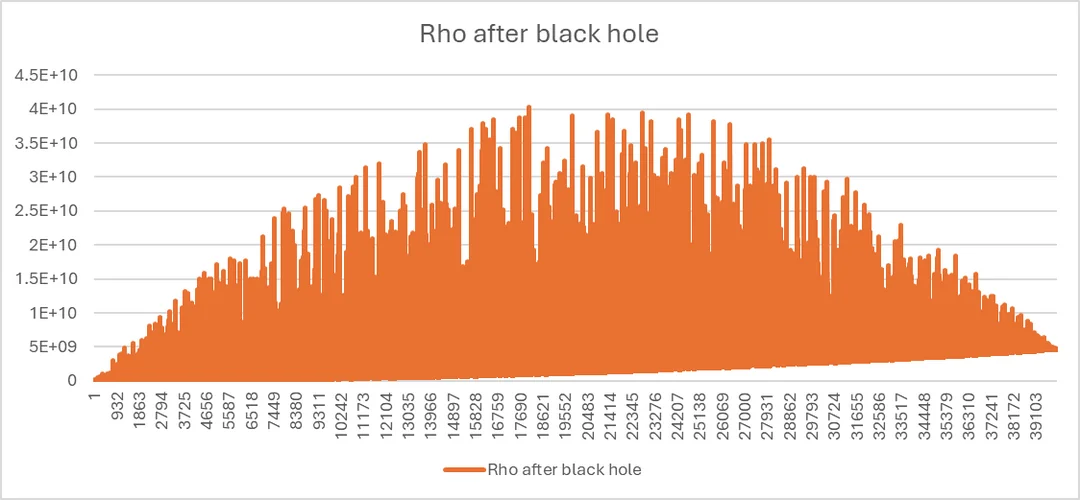
Graph 1a: a publication of
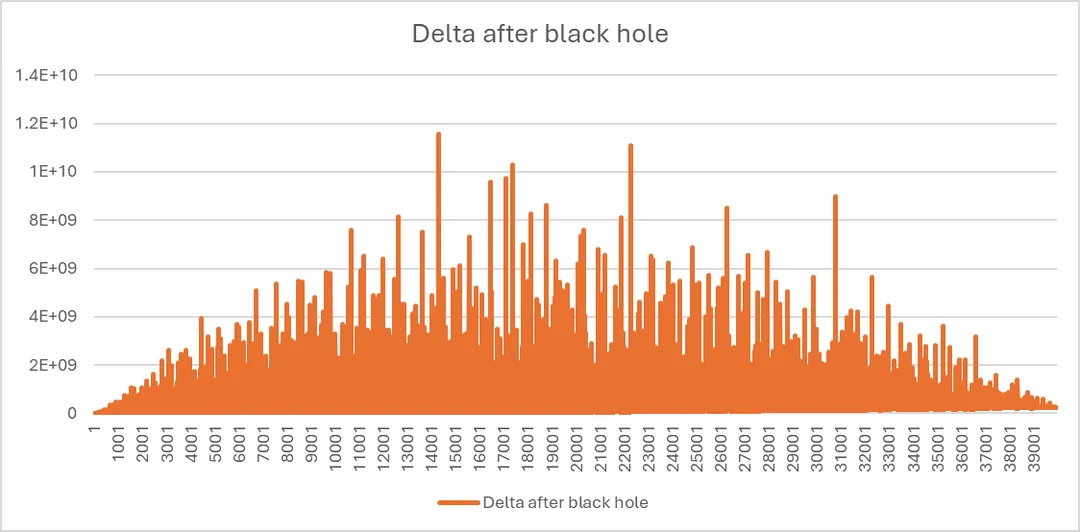
Graph 1b: a publication of
- A publication at
(i.e., a publication with 1 hour in real time) with time interval 0.01.
Maximum cumulativeresulted at if black hole is implemented at (51.8%; Graph 2a).
Maximum cumulativeresulted at t = 900 if black hole is implemented at t = 480.40 (53.3%; Graph 2b).
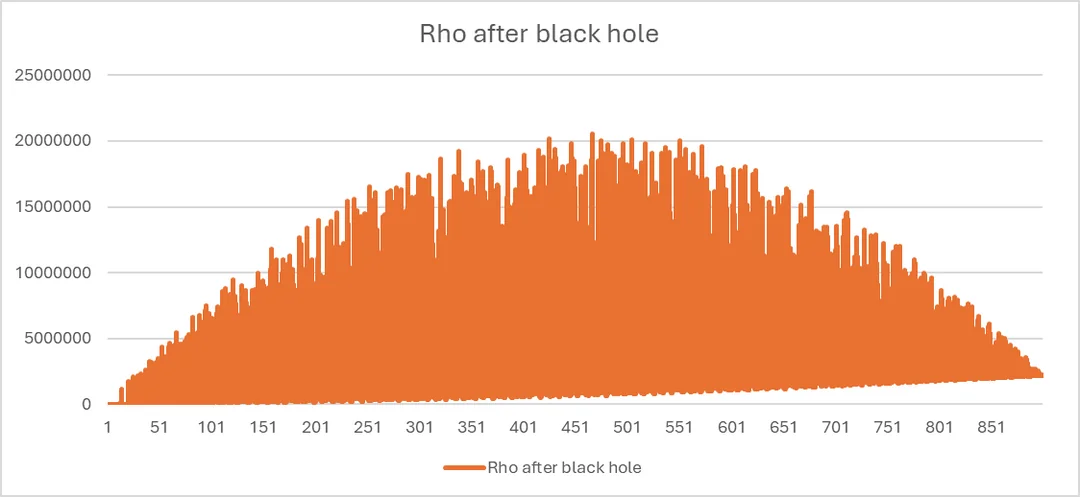
Graph 2a: a publication of
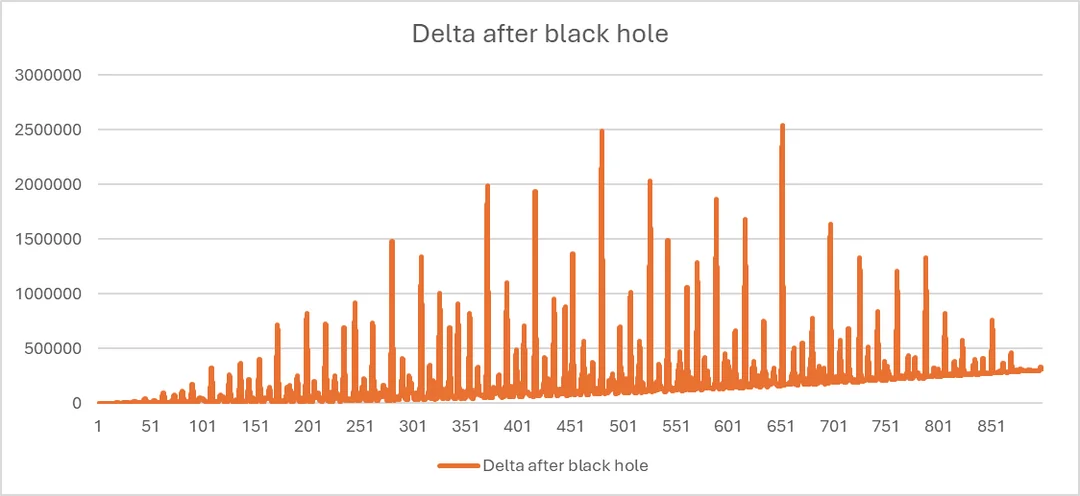
Graph 2b: a publication of
- A publication at
(i.e., a publication with 2 hours in real time) with time interval 0.01.
Maximum cumulativeresulted at if black hole is implemented at (53.2%; Graph 3a).
Maximum cumulativeresulted at if black hole is implemented at (36.2%; Graph 3b).
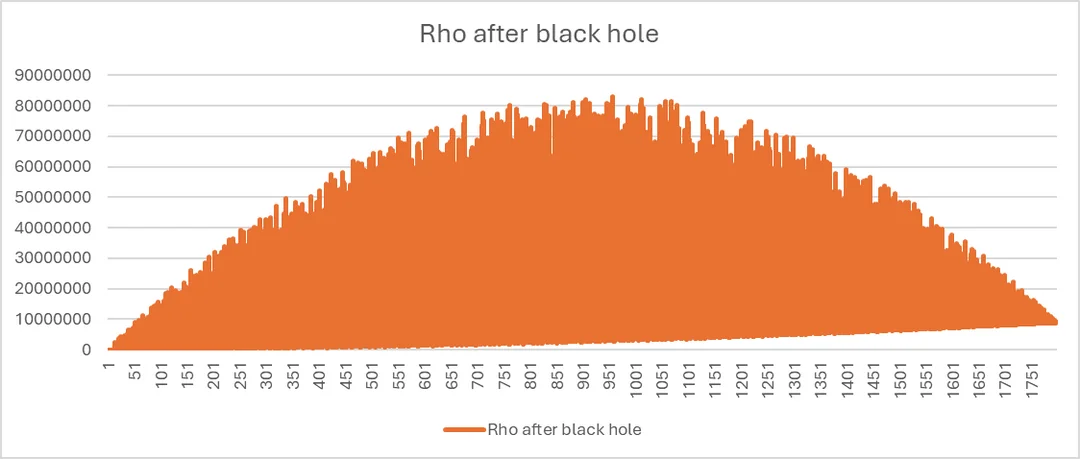
Graph 3a: a publication of
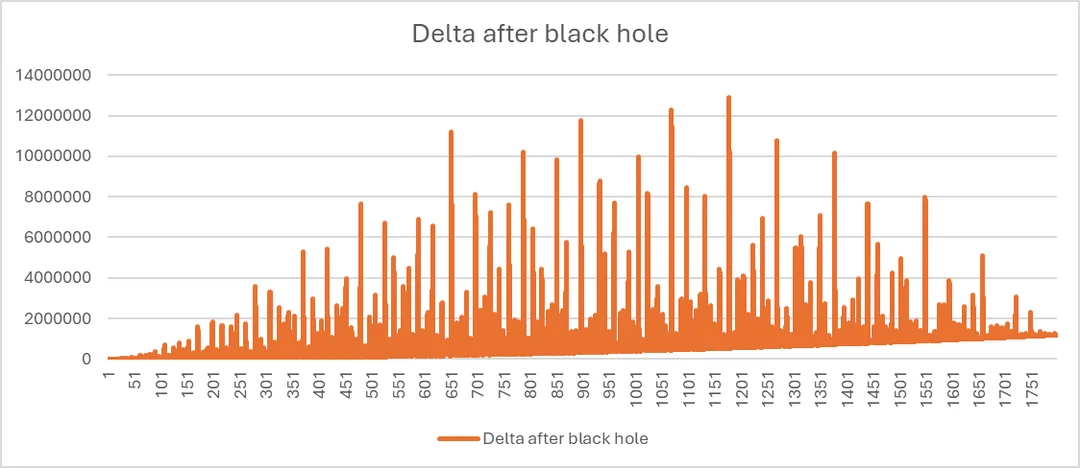
Graph 3b: a publication of
- A publication at
(i.e., a publication with 100 minutes in real time) with time interval 0.01.
Maximum cumulativeresulted at if black hole is implemented at (50.8%; Graph 4a).
Maximum cumulativeresulted at if black hole is implemented at (43.5%; Graph 4b).
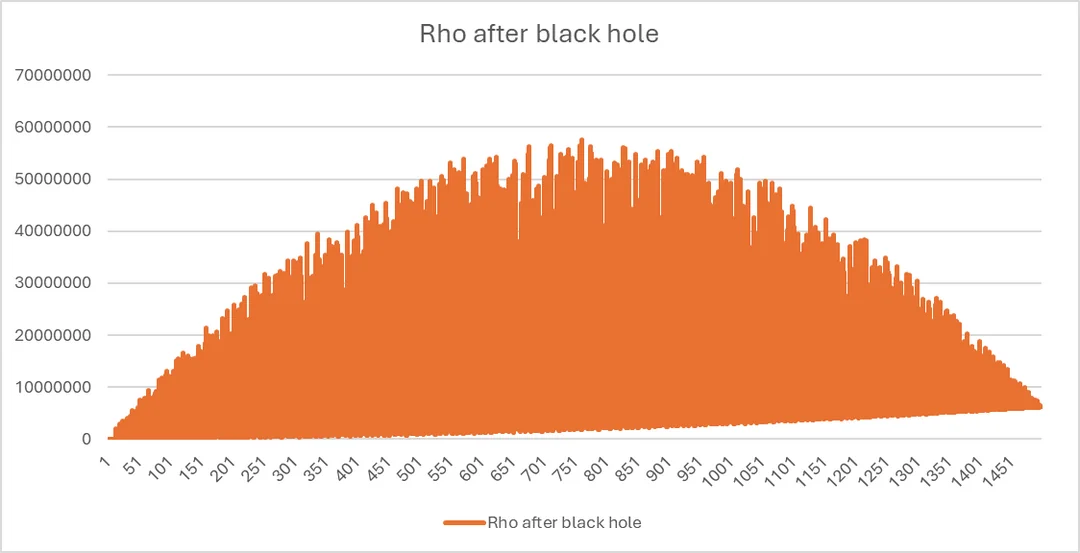
Graph 34: a publication of
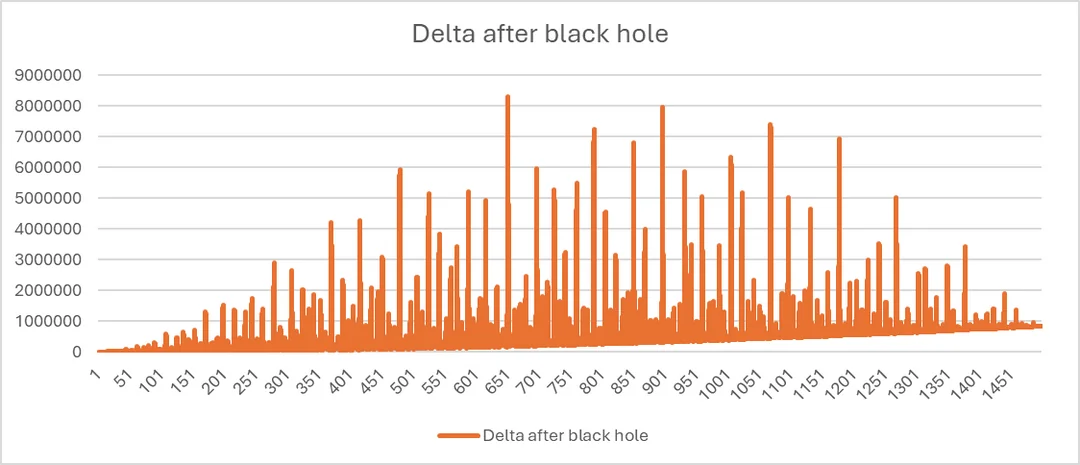
Graph 4b: a publication of
All 4 data sets showed similar results that maximum cumulative
Evaluating the effect of varying
As
The 4 above-mentioned data sets were repeated with the simulation of
- A publication at
with time interval 1 (Graph 5).
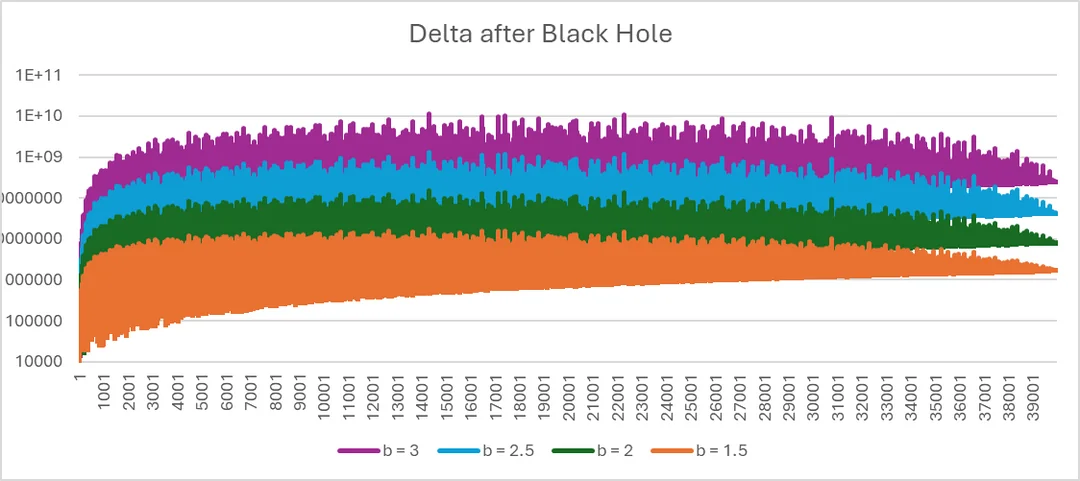
Graph 5: a publication of
- A publication at
(i.e., a publication with 1 hour in real time) with time interval 0.01 (Graph 6).
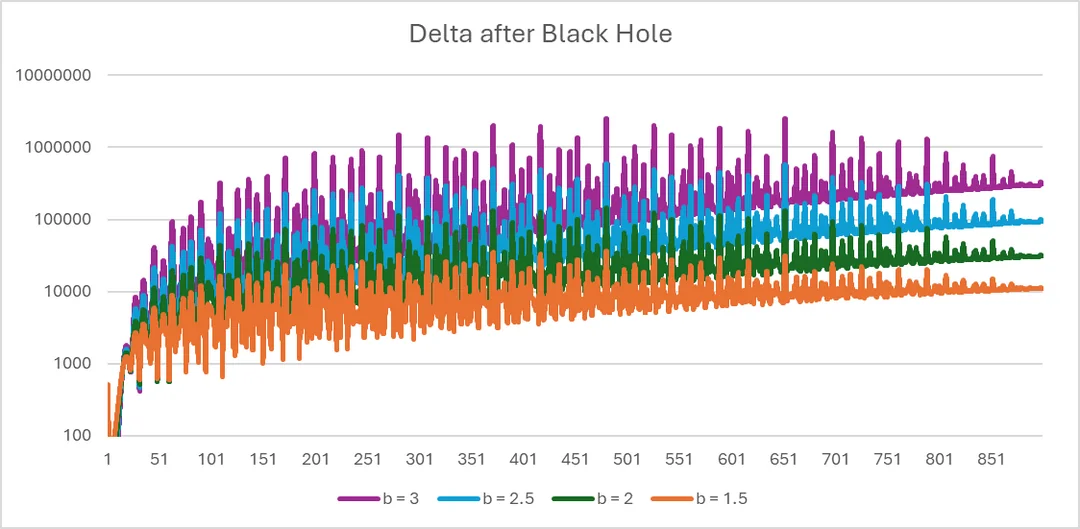
Graph 6: a publication of
- A publication at
(i.e., a publication with 2 hours in real time) with time interval 0.01 (Graph 7).
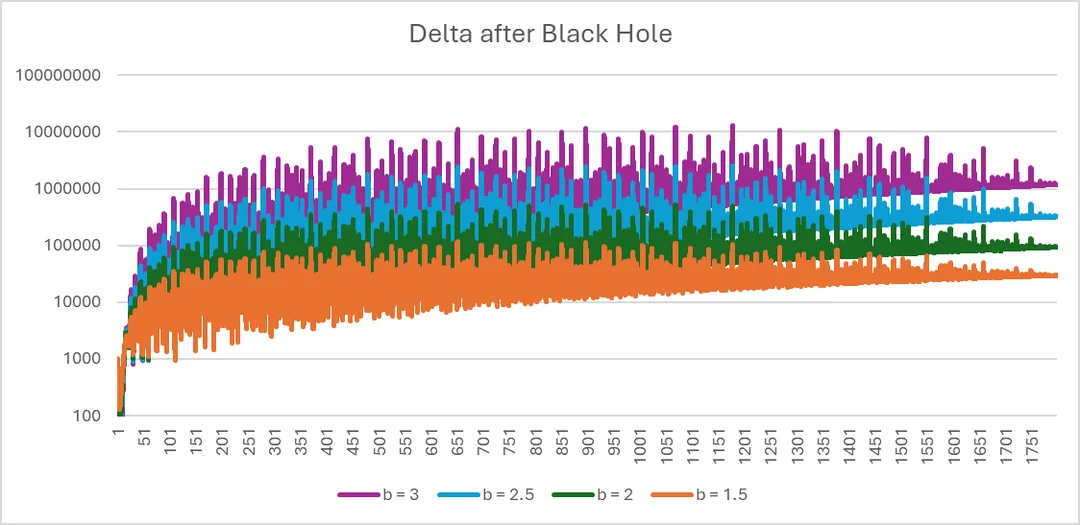
Graph 7: a publication of
- A publication at
(i.e., a publication with 100 minutes in real time) with time interval 0.01 (Graph 8).
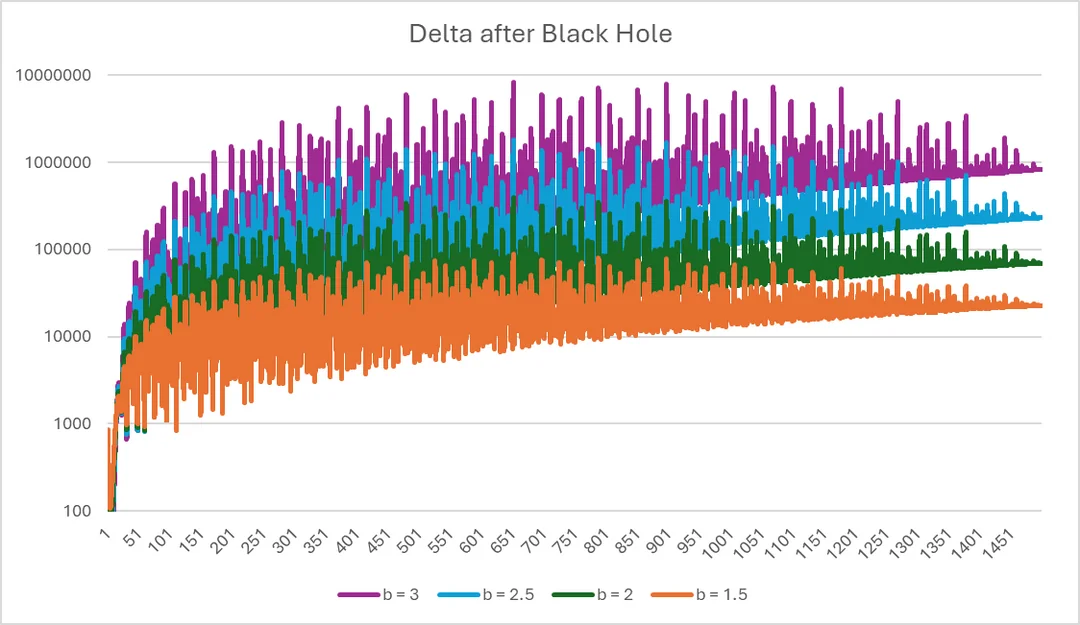
Graph 8: a publication of
The result can be summarized with the following tables:
Class: strat_separated;
Caption:
| 40,000 | 1,800 | 1,500 | 900 | |
|---|---|---|---|---|
| 14,304 | 652.21 | 652.21 | 480.4 | |
| 14,304 | 652.21 | 652.21 | 480.4 | |
| 14,304 | 1,178.45 | 652.21 | 480.4 | |
| 14,304 | 1,178.45 | 652.21 | 652.21 | |
| [FOOT;]Table: The time of implementing black hole, |
Class: strat_separated;
Caption: Cumulative
| 40,000 | 1,800 | 1,500 | 900 | |
|---|---|---|---|---|
| 17,669,273.86 | 119,349.2729 | 89,947.45292 | 36,084.73598 | |
| 152,436,399.5 | 536,797.6358 | 401,239.6211 | 145,114.0593 | |
| 1,325,576,801 | 2,528,099.281 | 1,818,056.847 | 597,028.0944 | |
| 11,563,388,612 | 12,887,476.7 | 8,301,046.207 | 2,537,932.77 | |
| [FOOT;]Table: The maximum cumulative |
Conclusion and Discussion #
Conclusion #
The above investigations illustrate the fact that implementing black hole at different times does affect the cumulative
Implementing black hole at different times does not consistently affect the cumulative
Evaluating the Effect of
The above simulations took on a major assumption of a publication that had the same levels of
-
The cost of purchasing
, , , , , and has no effect on the graphs, as the graphs plot the cumulative , not the a player have at a specific . -
The effect of
, , and will shift the graphs of cumulative upward and rightward at a non-linear scale, as directly depends on , , and . -
and has no effect on the graphs of cumulative , as they have no relationship on . -
The effect of
, , and will shift the graphs of cumulative upward and rightward at a non-linear scale, as directly depends on , , and . -
The effect of
will shift the graph of cumulative upward at a non-linear scale and cumulative upward at an exponential scale, as it directly influences in an exponential manner and hence indirectly. -
The effect of shortened time buying the variables will shift the graphs of cumulative
and leftward at a non-linear scale, as it allows an earlier growth for cumulative and in a repeatable manner.
Overall, purchasing
The above-mentioned effects were later verified by the sim (with the most optimal strategy implemented by brute-forcing different
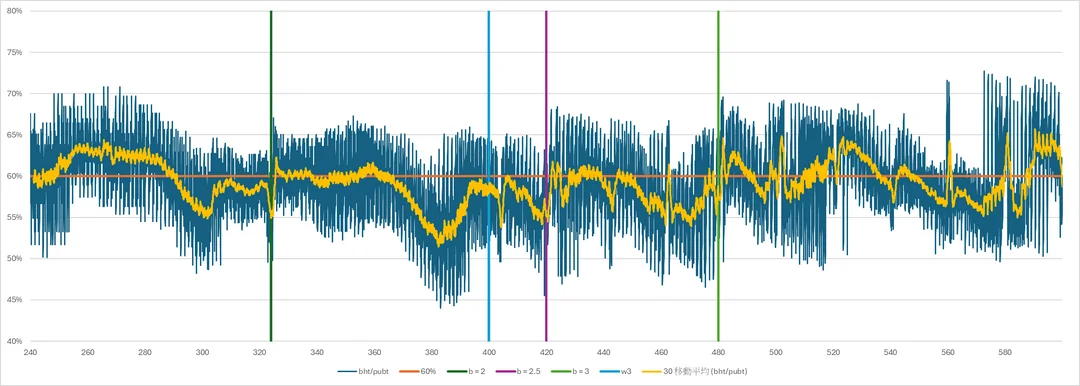
Graph 9: Relative time of implementing black hole plotted against different
The plot supports the consistency of implementing black hole at 60% of the publication for achieving a more ideal outcome by optimization of cumulative
Evaluating the Actual Time for Implementing Black Hole #
Implementing the black hole at the right time is essential for
In response of this, there are also data from Discord about
Proposing a Possible New Idle Route for Completion of RZ CT #
Base on the discussion and all available data we have at this moment, it may be reasonable to propose a new idle route of publication for completion of RZ CT after e600
-
Take an estimate on the duration of the upcoming publication wish to be idled. Calculate the hypothesized time for implementing black hole (i.e., 60% of your publication time. Do estimate a longer time if a
and/or upgrade is close to your previous publication point). -
Set the time for implementing black hole that is
and has a high and is sufficiently close to the hypothesized time calculated from previous step. -
Start playing the publication with autobuy all (as missing
and purchases affect the progress heavily if it is missed for a significant portion of time). -
When the black hole is implemented, continue to autobuy until the end of publication.
-
Repeat the progress if the next publication is also designated to be idled.
Acknowledgement #
Lastly, I would like to give a huge thanks to the following people/group of people for assisting the verification of hypothesis and further findings on RZ CT:
-
Prop
- For designing the RZ CT, providing data for processing and verifying the hypothesis, and refining on the accuracy of the hypothesis.
-
Hotab, Mathis S.
- For designing the simulation for RZ CT and suggesting the concept of deviating from theoretical time and selecting
with high .
- For designing the simulation for RZ CT and suggesting the concept of deviating from theoretical time and selecting
-
invalid.user_, Megaminx
- For suggesting the point of assessing the effect of
on cumulative and , and bringing up several points in discussion section to investigate with.
- For suggesting the point of assessing the effect of
-
Axiss, lll333, Black Seal, Mathis S., Megamin, Maimai
- For willing to test my hypothesis with their save and bringing up several points on my hypothesis. (ofc, thanks Maimai for enlightening of RZyoyoyo lol)
-
All other people
- For providing experimental data and providing support whenever I need them.